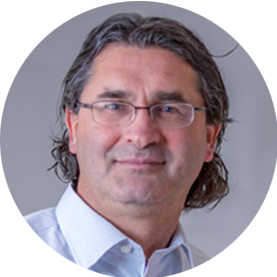
The mission of the Ceresco Academy is to be a privileged meeting point with producers to promote the highest standards of quality and thus maximise their success.
DISCOVER THE BENEFITSCategories
- Alliance & growth
A tip of our cap to some successful, deep-rooted producers.
- Insights videos
Quickly benefit from valuable insights from our experts.
- Tools and Calculators
Quickly benefit from valuable insights from our experts.
- Useful documents and links
Quickly benefit from valuable insights from our experts.
- All publications

Tools and Calculators

Useful documents and links
THE CERESCO ACADEMY PRESENTS
Alliance & growth
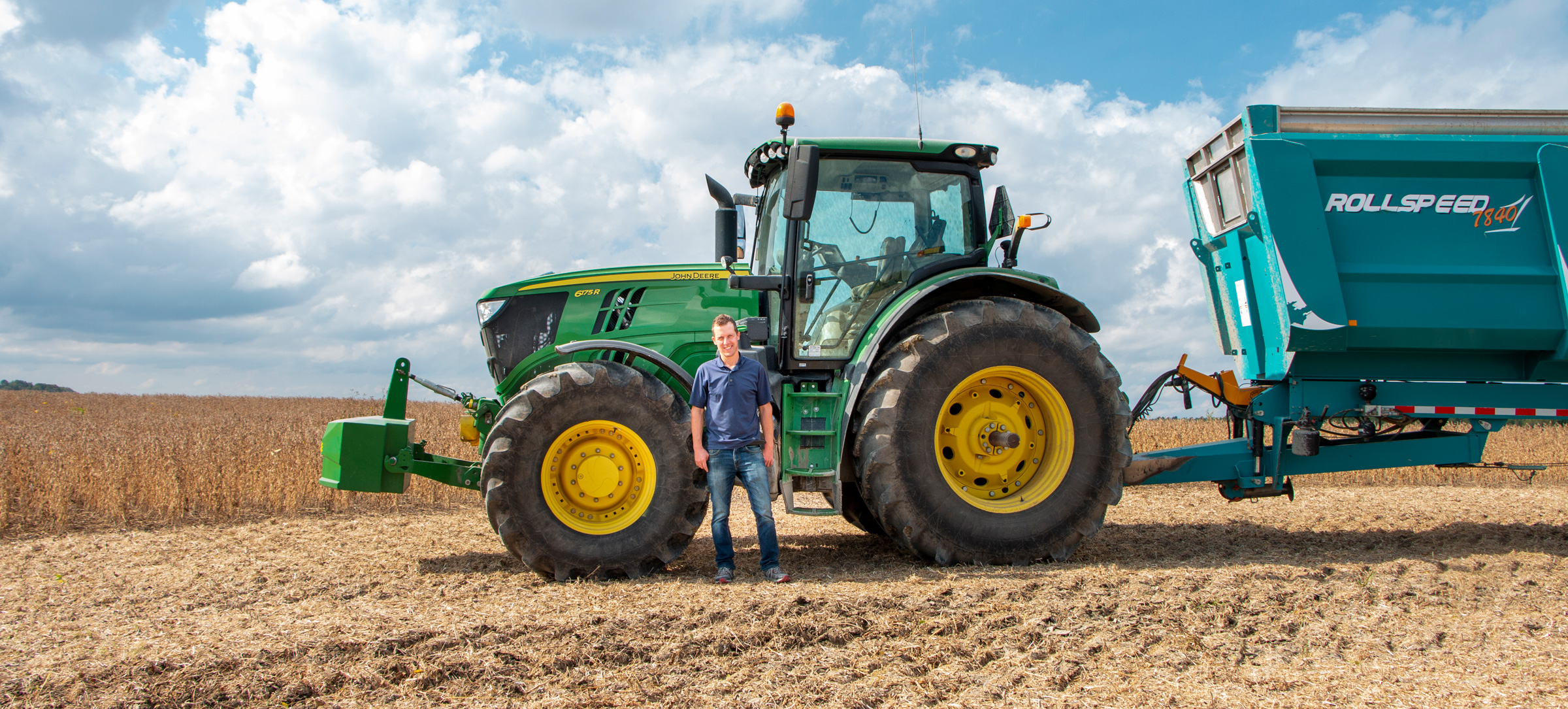
September 2021
Ferme de l’Éclatière – Passion and evolution
PRODUCER’S NAME
Xavier Peeters, Maggy Vastersaegher and
Sébastien Peeters
FARM NAME
Ferme de l’Éclatière
REGION : The Laurentians
CERESCO PRODUCER SINCE
2007
FARM SIZE
1400 acres
2021 crop varieties
AAC Vireo
AAC Coryllis
2020 crop varieties
Havane
Eider
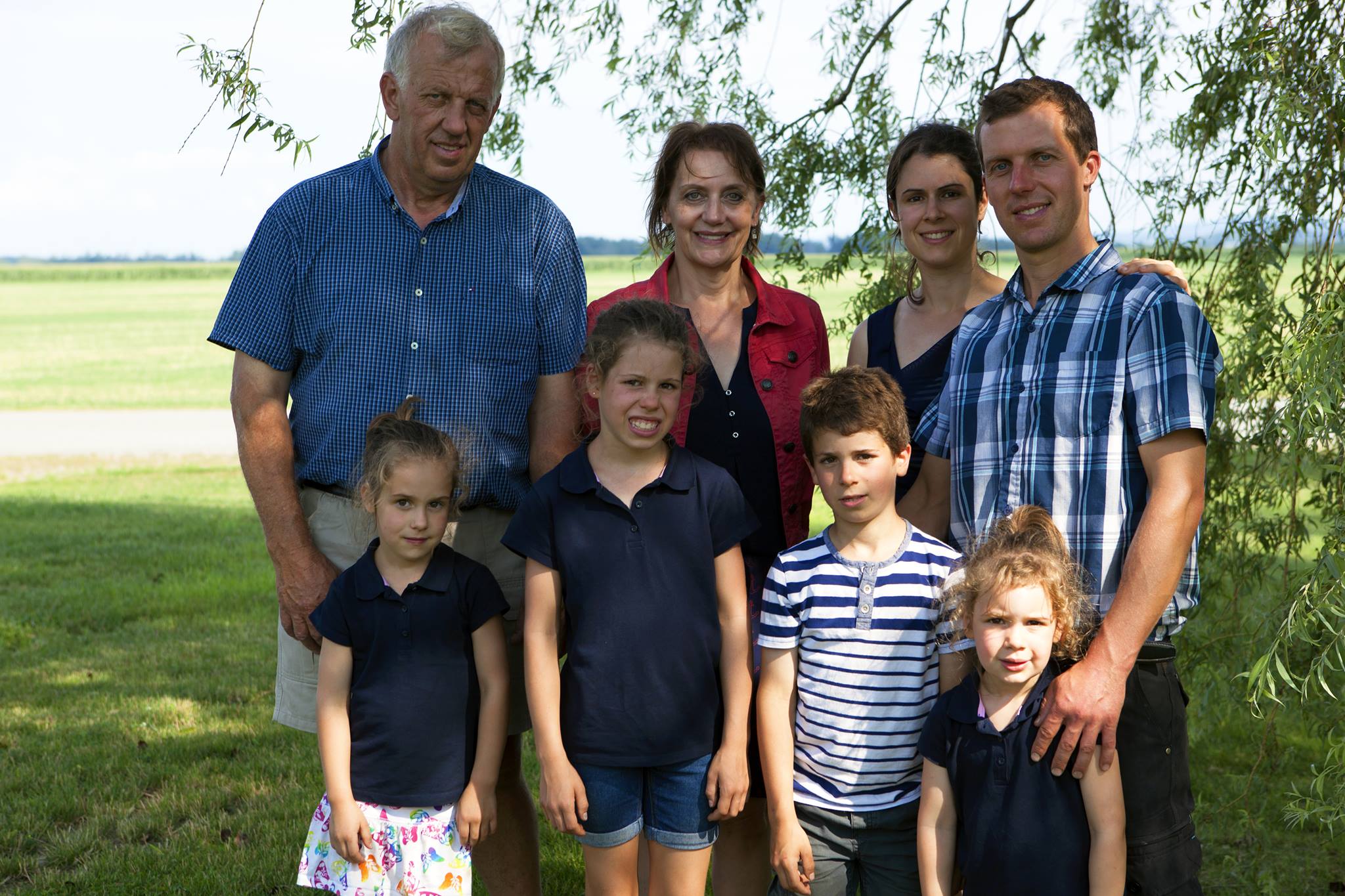
"Xavier, Maggy, Sebastien, Roxane, Mégane, Émile, Victoria and Charline.
Photo : Arrive en Campagne"
When Xavier Peeters and Maggy Vastersaegher arrived in Saint-André-d’Argenteuil from their homeland of Belgium in 1979, the name “ Ferme de l’Éclatière ” seemed natural for their farm, as it was the name of the family land in Belgium. The farm was established 400 years ago and originally operated by the lord of Éclatière and still owned today by Xavier’s brother. Driven by the desire to contribute to the development of the family business, their son Sebastien pursued his studies at the Institut de technologie agroalimentaire (ITA) in Saint-Hyacinthe, where he meets Roxane Lambert, his future spouse. Sharing a common vision, at the end of their studies in 2005, they joined the family business.
An Evolution Rooted in Deep Values
Since the acquisition in 1979, the farm has grown slowly but surely with land and milk quota purchases. Starting out with only 56 hectares of land and around 50 dairy cows, today the Peeters cultivate more than 1,150 hectares and milk 155 cows for a quota of 235 kg.
Roxane and Sebastien are determined to pass on their love and respect for the land and animals to their children. Moreover, the next generation is taking shape with Mégane, 14, Émile, 12, Victoria, 10 and Charline, 8, already helping in the barn.
At the same time, growth continues on the farm. The freestall barn now has 4 milking robots and the couple would like to see the number of milking cows increase to 200, and are aiming for a 350 kg quota. Sebastien adds: “Our facility is ready for the targeted increase. We have enough space in the barn and the 4 robots will be enough for the task. Roxane, who takes care of the dairy herd, can manage more animals without creating more work”.
« My parents are still active, Maggy, my mother, takes care of the administration and Xavier, my father, operates the farm tractor-trailer to transport the grain to the grain centers. He also helps with machinery maintenance and field work. We also have a full-time employee in the barn with Roxane and an intern from France for two years, who is assigned to the field and the barn, depending on the time of year. Other family members lend a hand when the going gets tough. Also, we can count on our retired neighbors who come to help in the spring and fall» mentions Sebastian.
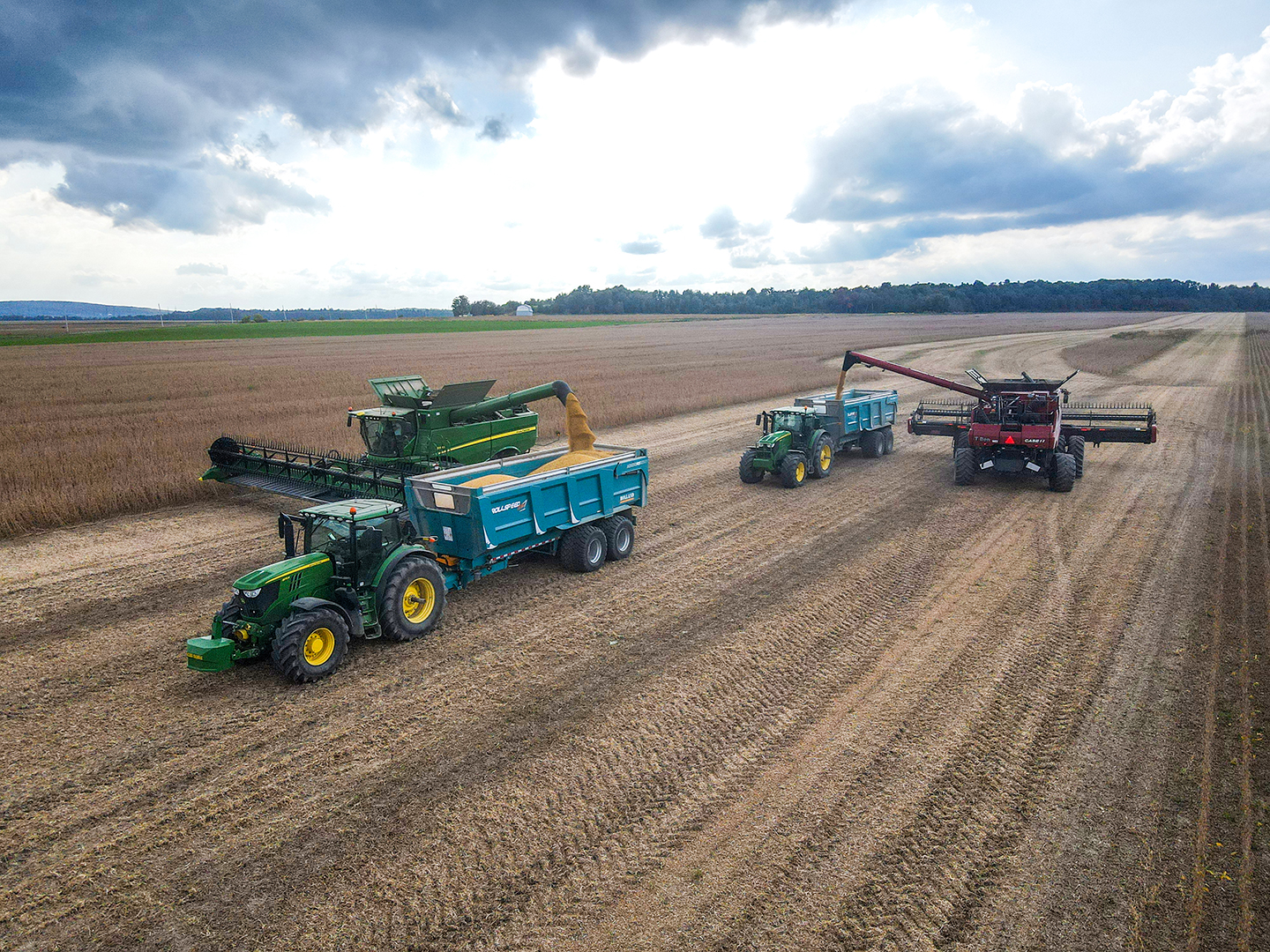
"AAC Coryllis harvest "
A Down-to-earth Philosophy
After 6 years of voluntary simplicity growing the fewest crops and minimizing tillage, the owners are considering a rotation with plowing every 3 to 4 years to better control weeds.
«I wish I could decrease the use of pesticides and herbicides, but spraying is the lifeblood of IP soybeans.»
«During spraying time, I go around my fields every day so as not to miss my shot, especially for ragweed, foxtails and velvetleaf. I am also supported by my Ceresco advisor, Valentin and my William Houdes’ representative, Michel Duplessis, who recommend the right products and the best time to apply them. », mentions the farmer.
The Benefits of IP Soybeans
The Saint-André-d’Argenteuil region can count on approximately 2,700 Heat Units and the majority of the land is made up of clay loam. These are good lands suitable for growing soybeans. “We have never planted glyphosate-tolerant soybeans, except for one field one year. Managing both is more complex and we opted for IP only. We have two grain storage and drying centers on the farm. One is dedicated to corn and the other to soybeans. We are thus certain that there will be no contamination by human error or poor cleaning. »
« We have worked exclusively with Ceresco for a few years, but have been customers for 14-15 years. They offer excellent service and it is the closest place after the Port of Montreal (83 km vs 105 km). But the main advantage is that there is no waiting for delivery and the site is open on weekends during harvest. At the port, we can lose 4 to 5 hours waiting. It is also very easy to close the prices and the premiums are good, » says Sebastien.
The owners also appreciate the quality of the seed. “Three years ago, Valentin offered us a variety of Natto soybean (Coryllis) that we sowed on 40 ha on a trial basis. The following year we increased to 80 ha and in 2021 we increased to 240 ha, planted with this variety. The premium for Natto soybeans approximates the price of organic soybeans. The other 240 ha will be sown with the Vireo variety, a large and high-yielding bean”.
Soybean seeding is done using a 24-row at 20 in. central hopper seeder, which allows to pass between the rows with the sprayer. To be more efficient at harvest, Sebastien has equipped himself with a 40 ft draper head to harvest his soybeans. He considers this to be a big plus for the quality of the harvest and that less grain is left in the fields. He also installed a screen on the unloading auger which brings out a large part of the weeds that will not end up in the silo.
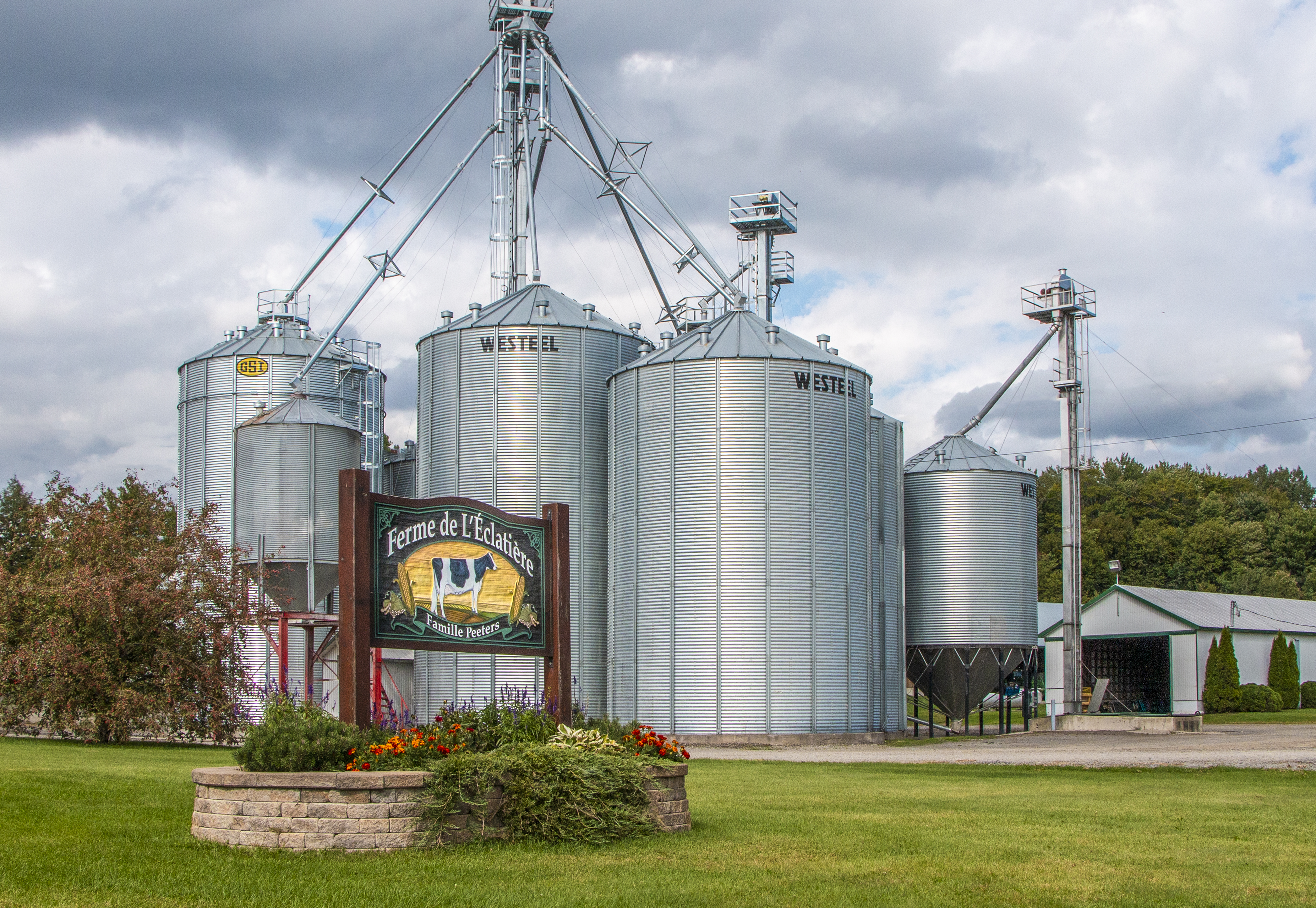
"Storage equipment at Ferme de l'Éclatière"
The secrets to success
If he had to give advice to producers who would like to grow IP soybeans, Sebastien mentions that they must be thorough, monitor weeds well and harvest under optimal conditions. Fields should be ready for production, well leveled, well drained, fertile and clean. You have to invest in your fields to succeed, but it’s worth it.
Sebastien mentions that the Ceresco team is there to help him achieve his goals with the IP varieties. From sowing to harvesting, from storage to delivery, he feels well supported by everyone, like a big family.
Sebastien adds that storage and drying equipment must be designed to handle the soybeans gently to minimize grain breakage. “This is one of the next major projects to be carried out on the farm. I want a drying plan that will take care of the integrity of the beans, from arrival at the farm to delivery to Ceresco,” concludes the producer.
Back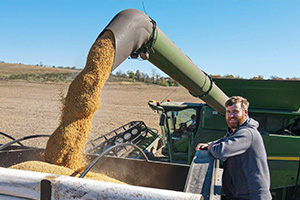
Devoted to Agriculture for 5 Generations and Counting
Alliance & growth
Ian Laver, a young producer from Warkworth – Ontario, shares his passion for farming done well. Discover how he increased his income by growing IP soybeans.
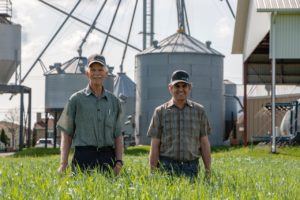
Janlau Farm : A third of a century in organic production
Alliance & growth
The farm came to legally in 1973 and consisted of a small dairy farm and around 500 acres of hay, cereals, soybeans, and corn production.

Spotlight on Camil Tétreault, a true passionate Do-it-Yourselfer
Alliance & growth
Passion, efficiency, discipline, and innovation are the four words that best sum up the agricultural career of Camil Tétreault and his long-standing partner, his wife Murielle.
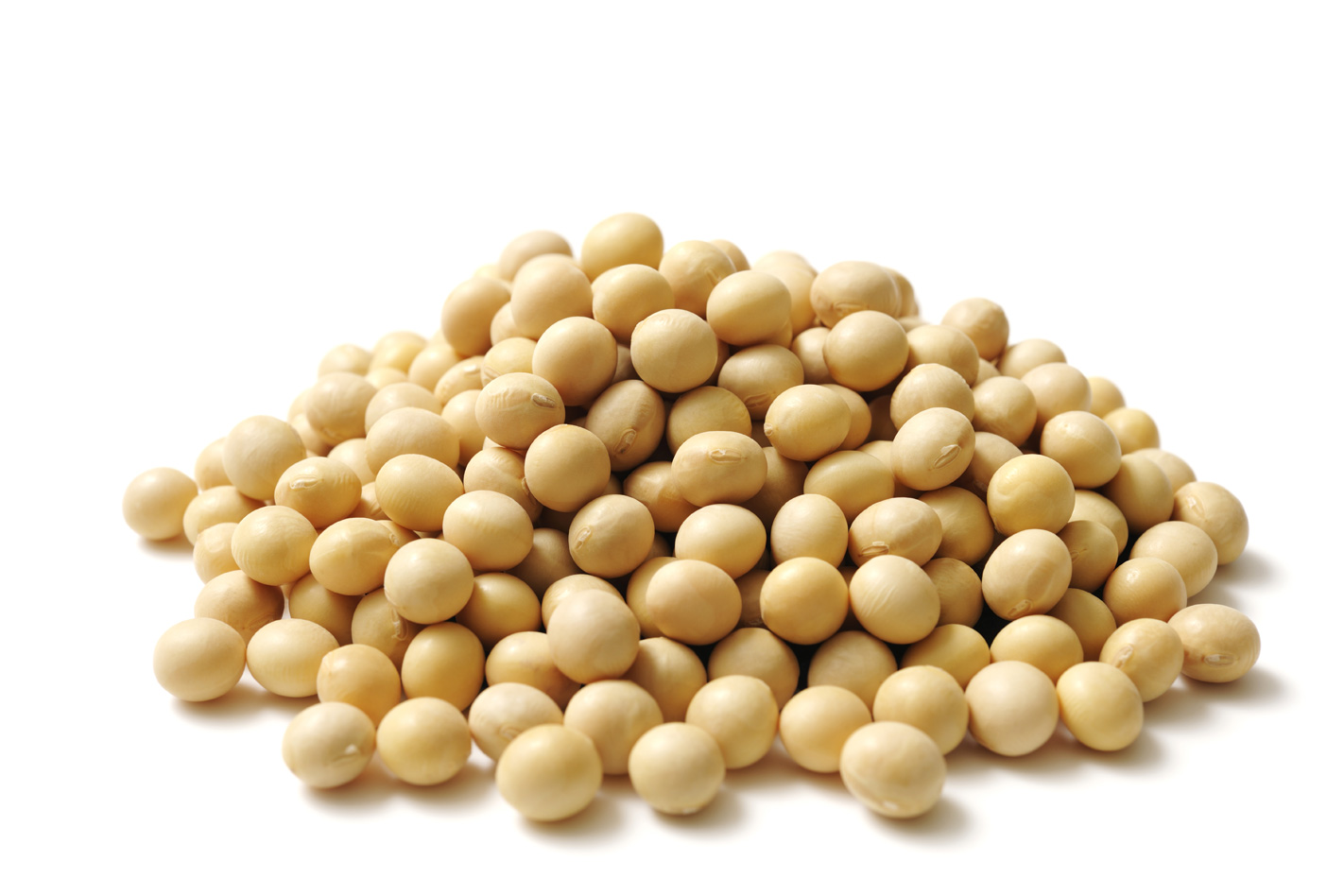
Soy
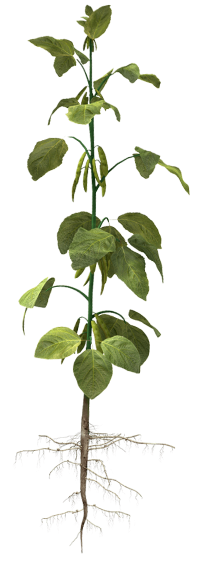
Experts
